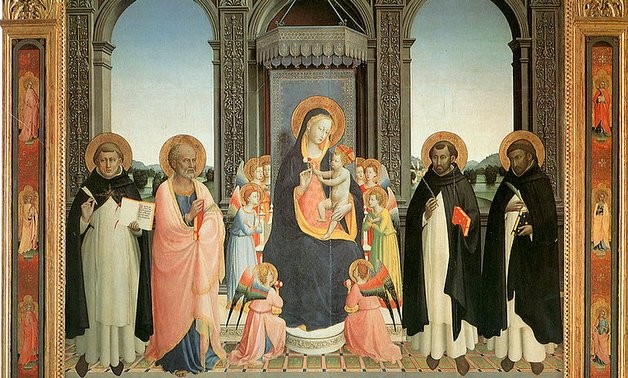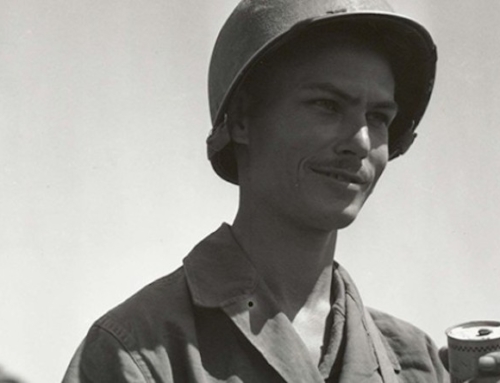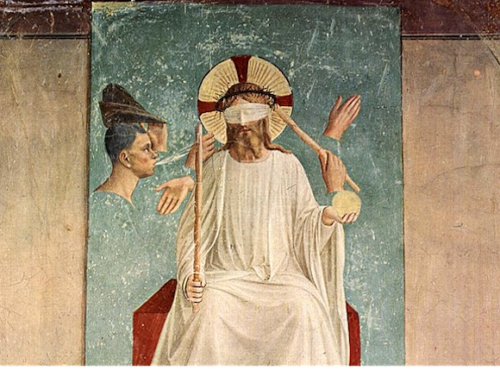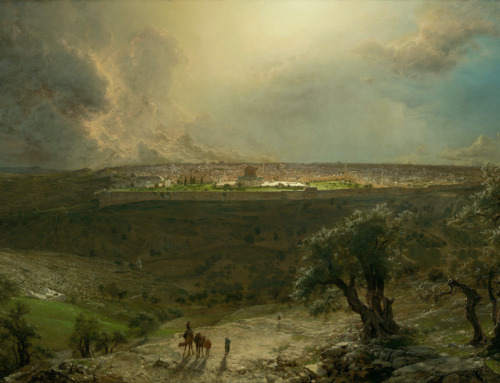Dear readers,
The student brothers are on retreat the week of August 11-15. Rather than leave the blog dormant, we offer you reflections by and about various Dominican saints for your meditation. Regular blogging will resume on August 18. In the meantime, please remember us in your prayers and be assured of our prayers for you.
The Editors
✠
From the Treatise of Brother Henri-Dominique Lacordaire on the re-establishment of the Order of Preachers in France
In the Thirteenth Century faith was deep. The church still held sway over the society that she had conquered. However, the European mind, which had been slowly worked upon by time and by Christianity, was nearing the crisis of adolescence. What Innocent III had seen from his bed in a dream – a church that was tottering – Saint Dominic revealed to the whole world. When the whole world believed that the Church was Queen and Mother, he declared that nothing less than a resurrection of the primitive apostolate was required to save her. Men responded to Saint Dominic as they had to Peter the Hermit – they became crusaders.
All the universities of Europe contributed their quota of masters and students. Brother Jordan of Saxony, the second Master of the Order, gave the habit to more than a thousand men whom he had won for this new kind of life. People said of him, “Do not go to Brother Jordan’s sermons, for he is a courtesan who catches men.” In an instant, or, to speak literally – for here truth surpasses metaphor – in five years, Saint Dominic who, before Honorius’ Bull had only sixteen collaborators, eight Frenchmen, seven Spaniards and one Englishman, founded sixty convents filled with exceptional men and a flourishing younger generation.
All of them, like their master, wanted to be poor at a time when the Church was rich, poor even to the extent of being beggars. All of them, like him, at a time when the Church was supremely powerful, wanted to exercise only one kind of influence: The voluntary surrender of men’s minds to their virtues. They did not say, like the heretics, “The Church must be stripped bare.” Instead they stripped her in their own persons and showed her to the people bare as she was at first.
In a word, they loved God, they loved him truly, they loved him above all else, and they loved their neighbor as themselves and more than themselves. They had received in their hearts the ample wound that has made all the saints eloquent. In addition to this asset of a passionate soul, without which no orator has ever existed, the Friars Preachers also had great skill in grasping the kind of preaching which was suited to the time.
All the same, I shall mention some of the names that are best remembered. Saint Hyacinth, apostle of the North in the thirteenth century, preached Jesus Christ in Poland, Bohemia, Great and Little Russia, Sweden, Denmark, Livonia, on the banks of the Black Sea, in the islands of Greece, and all down the coastline of Asia Minor. His progress could be followed by means of the convents established as he went. Saint Peter of Verona was felled by the assassin’s sword after a long apostolic career, with the blood that flowed from his wounds he wrote the first words of the Apostles’ Creed in the sand: “I believe in God.” Henry Suzo, that lovable man from Swabia in the Fourteenth Century, preached with such success that a price was put on his head. During the same period, brother John Tauler was much acclaimed in Cologne and throughout Germany.
Let me also mention Saint Vincent Ferrer who, in the Fifteenth Century, evangelized Spain, France, Italy, Germany, and the Kingdoms of England, Scotland and Ireland. He achieved such a high reputation that he was chosen to be one of the arbitrators to decide the succession to the throne of Aragon. The Council of Constance sent a deputation to implore him to come and take his seat at it. Girolamo Savonarola was the constant friend of the French in Italy and the idol of Florence, whose liberties he defended and morals he wanted to reform. He was burned alive in the midst of an ungrateful people, but to no effect, because his virtue and his glory rose higher than the flames at the stake. Pope Paul III declared that he would regard as a heretic anyone who dared to accuse Savonarola of heresy.
I also add Thomas Aquinas, who became in a short time the Catholic church’s most famous doctor. There is also Brother Angelico – when Michelangelo saw the picture of the Annunciation that our Friar had painted in the church of Saint Dominic in Fiesole, he said that no one could paint figures like this unless he had first seen them in heaven. There is also Bartolomé de Las Casas and many others.
Let us leave these revered names in the safekeeping of those who know them and call upon them. Let us end our brief sketch of this great Order with the words of the Fourteenth Century poet and one of the greatest of Christian poets, in which the most celebrated singer of the Divine Comedy, sang the Order’s praises: He was called ‘Dominic,’ and it is to him that I refer as the gardener chosen by Christ to help him in his garden. He poured forth, like a stream from a lofty spring, his teaching, and will, and apostolic life. From that stream flow many brooks, by which the garden of the Catholic faith is watered.
✠
Image: Fra Angelico, Fiesole Altarpiece







